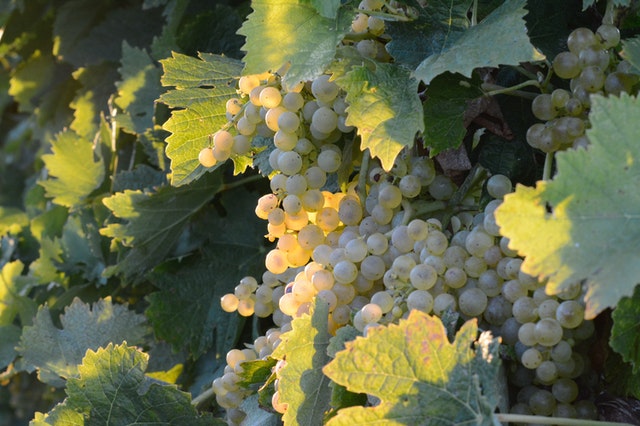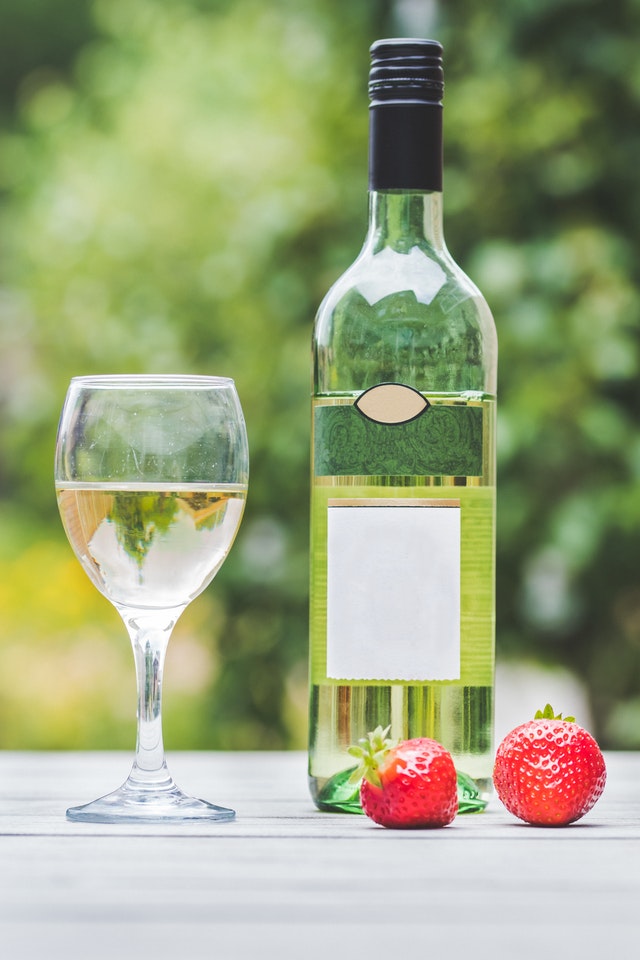Most wine newbies start with sweet wines. They are the gateway to the other wine varieties. I have to confess, I have stayed with dry white wines and haven’t moved on to richer, deeper red wines. But, which sweet white wine do you start with? Riesling vs Moscato, which one do you choose, and why?
Both are sweet wines. Of the two, Moscato is the sweetest. These are what a lot of people consider, dessert wines. They pair perfectly with something sweet. They are also usually served chilled. For me, white wines always taste better chilled.

Grapes
This is going to sound a bit obvious, but Riesling is made from Riesling grapes and Moscato is made from the Muscat grape. The interesting fact is in what wine region each of these grapes are usually grown. Riesling grapes are grown in Germany with some also grown in California, Washington, and Oregon. Muscat grapes are grown all throughout Italy and most of the United States.
If you are like me and don’t really like sweet wines, or sweet drinks for that matter, stick with the Riesling. It is the less sweet of the two. Riesling has notes of peach, honey, citrus, green apple, and pear. Because of these notes and the grapes, a Riesling can also be dry. Probably why I lean more towards the Riesling, is its higher acidity level. That acidity balances the sweetness of the wine. But, it will have a heavier mouthfeel like most dry wines.
Moscato wines will have similar flavor notes. Because they are a dessert wine, they tend to have a lower alcohol content but have a higher sugar content. A great starter wine. This wine will taste lighter and will not be as heavy on the palate.
For a flavor profile, a Riesling will tend to lean towards the apple and pear notes, while a Moscato will lean more towards the lighter tropical notes like orange blossom and citrus. Since a Riesling is less sweet, it pairs well with spicy dishes, and not as sweet desserts.
Interesting fact… Riesling can be aged while a Moscato doesn’t age very well. As wines age, they become smoother and, frankly, can taste better. That’s why a Riesling will have, if aged, more complex notes and a heavier mouth feel versus the Moscato.
Tannins
Sweeter wines are usually a better choice for a wine newbie. It’s easy to drink but still can have flavor complexities. A dry white wine can be an acquired taste. There is a relationship between the alcohol level and the dryness of the wine. The higher the alcohol level, the drier the wine. Conversely, the lower the alcohol level, the less dry the wine. The dryness of a wine can also be attributed to tannins. There are no tannins in sweet wine.
What are tannins? They are found in nature. It’s actually what is on plants that make them not very tasty to wildlife. Tannins can make the plants taste bitter. When making wine, the tannins come from the grape seeds, stems, and even the wooden barrels used to age some wine. Tannins create the drying sensation in your mouth.
Production
When it comes to production there are several styles wines can take. Riesling can be produced as a dry riesling, sparkling, or even semi-sweet rieslings. While Moscato usually is produced one of two ways; either carbonated or non-carbonated. The most popular Moscato is moscato d’asti, it’s a lot like champagne, but not as bubbly. Produced in Northern Italy, this sparkling wine is made from the Moscato grapes, specifically the muscat blanc variety. It’s a cousin to Asti, but not as bubbly nor not as sweet.
German Rieslings are easy to spot… they come in a tall thin bottle. You know it when you see it. Think back, too long ago, and remember seeing those tall thin blue bottles (think Blue Nun) around? That’s a riesling bottle. It goes back to when it was being first made and the way it was transported. Since it was transported via the river, versus the ocean, the bottles didn’t need to be thick. But they did need to be thin to allow as many as possible in a smaller riverboat hull. It’s interesting the stuff you learn when you start to explore the wine world.
Adding to the sweetness of wines is the residual sugar content. That’s is the amount of sugar left over after fermentation. The residual sugar not only accounts for the sweetness level but, in case you are counting them, the wine’s carb count.
Check out this chart to show how different wines rank on the residual sugar scale
Which One???
Want to step out and try something a bit different? Try an ice wine. The process to make ice wine is a bit different. The grapes are allowed to freeze while still on the vine. this process allows the wine to have a sweetness and a high acidity level. Interesting combination of the two types of wine. Most ice wine is made in Canada and Germany.
Which one of these sweet white wines is for you? If you are new to wines and lean towards sweet drinks, think Moscato. Not a fan of really sweet? Try a nice Riesling. The nice thing is since a Riesling can be dry, it’s a nice lead in to the dry white wines, such as Pinot Grigio, Sauvignon Blanc, Pinot Gris, or even a Chardonnay.
There are many different versions of sweet dessert wines. Standing in the wine section, you can truly be overwhelmed. There is pink Moscato (which is a bubbly rose wine), Riesling wines, and even dry styles. Don’t want to commit to a full bottle? Try a wine tasting party. Grab a bottle or two and invite friends over (have them bring a bottle) and then have a tasting party. (Remember don’t drink and drive – so designate a driver)
Or, find a wine store that offers tastings. To become a wine lover, you may have to taste quite a few before you find a style you really like. That’s ok. Explore the world of wine and see where your tastebuds take you.
Cheers, enjoy your wine journey!

